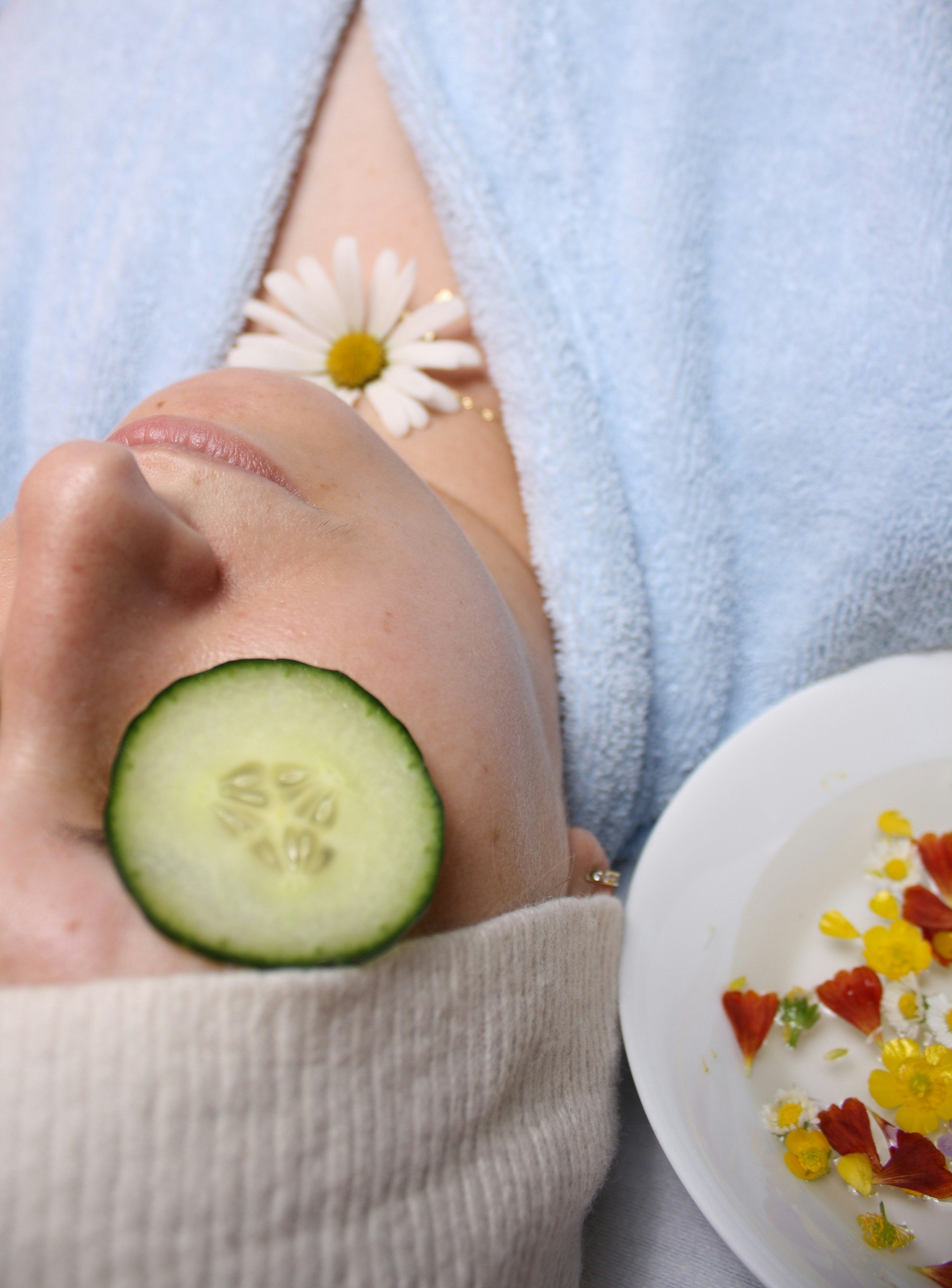In the fast-paced world we live in, taking time to relax and rejuvenate at a spa is essential for overall well-being. While traditional spa treatments like facials and massages often take center stage, scalp and foot treatments deserve special recognition for their vital role in promoting health and relaxation. These often-overlooked areas of the body can significantly affect both physical and mental well-being. In this article, we'll explore the importance of scalp and foot treatments in spa care, and how these treatments contribute to a comprehensive, head-to-toe wellness experience.
Understanding the Connection Between Scalp and Foot Care
Many people associate spa treatments with pampering, but the therapeutic benefits of scalp and foot care go far beyond surface-level relaxation. Both the scalp and feet contain a high concentration of nerve endings, making them sensitive areas that can carry stress, tension, and discomfort. In addition, the feet are essential for mobility and balance, while the scalp is integral to hair health and can serve as an indicator of underlying health conditions.
Neglecting these areas can lead to issues such as dry, irritated scalp, hair thinning, poor circulation in the feet, and even more serious ailments like plantar fasciitis. Incorporating scalp and foot treatments into a regular spa care routine not only provides relief but also promotes overall health by improving circulation, reducing tension, and encouraging relaxation.
The Benefits of Scalp Treatments
1. Promoting Healthy Hair Growth
A healthy scalp is the foundation of strong, vibrant hair. Scalp treatments at spas often involve deep cleansing, exfoliation, and massage, all of which play a crucial role in maintaining scalp health. Regular scalp treatments can help unclog hair follicles, remove excess oil and buildup, and stimulate blood flow to the scalp, promoting the delivery of essential nutrients to hair follicles. This, in turn, fosters healthy hair growth and can prevent issues such as hair thinning or breakage.
Many scalp treatments incorporate the use of essential oils, like tea tree oil or rosemary, which have antimicrobial properties that help maintain a healthy scalp environment. In addition, treatments that include hydration masks or serums can nourish the scalp, improving moisture levels and reducing flakiness or dryness.
2. Stress Reduction and Relaxation
The scalp is home to numerous nerve endings that are highly responsive to touch. Scalp massages, a common feature of scalp treatments, are highly effective at reducing stress levels. As gentle pressure is applied to the scalp, the parasympathetic nervous system is activated, inducing a state of deep relaxation. The result is a calming experience that helps release tension and reduce headaches or migraines.
For many people, the act of having their scalp massaged can be incredibly soothing, making it an ideal addition to a spa day aimed at relaxation. The mental benefits of a scalp treatment can leave clients feeling refreshed and less anxious, with a renewed sense of calm.
3. Improved Scalp Circulation
One of the most important benefits of a scalp treatment is the stimulation of blood flow to the scalp. Enhanced circulation delivers more oxygen and nutrients to hair follicles, which can improve hair health and prevent hair loss. Scalp massage techniques, such as kneading, tapping, and circular motions, help increase circulation, creating an ideal environment for hair growth.
In addition to promoting healthy hair, improved circulation can help remove toxins and waste products that may accumulate in the scalp. This detoxifying effect can alleviate scalp conditions such as dandruff or eczema, leaving the scalp feeling cleaner and healthier.
The Importance of Foot Treatments
1. Improved Circulation and Detoxification
Much like scalp treatments, foot treatments also play a vital role in promoting circulation. Regular foot massages and foot soaks can help stimulate blood flow to the lower extremities, which is particularly important for people who spend long hours on their feet or have circulation issues. When blood flow to the feet is improved, the muscles receive more oxygen and nutrients, reducing discomfort and preventing muscle cramps.
Detoxifying foot soaks, which often include ingredients like Epsom salts, seaweed, or essential oils, help draw out impurities from the body. The feet are known to accumulate toxins, and a foot soak can help flush these out, improving overall health and reducing the risk of infections or foot-related ailments. Detoxifying foot treatments can also improve the appearance of the skin on the feet, leaving them feeling soft, smooth, and refreshed.
2. Pain Relief and Tension Reduction
Foot treatments offer significant relief from pain and tension, particularly for those who suffer from foot-related problems such as plantar fasciitis, heel spurs, or arthritis. Foot massages target the muscles, tendons, and ligaments in the feet, reducing inflammation and alleviating discomfort. By applying pressure to specific points on the feet, therapists can help release tight muscles and restore flexibility.
Reflexology, a popular foot treatment, involves applying pressure to specific areas of the feet that correspond to different organs and systems in the body. This holistic approach to foot care can provide relief not only for foot pain but also for discomfort elsewhere in the body. Reflexology has been shown to improve digestion, relieve headaches, and promote relaxation by stimulating the body's natural healing processes.
3. Prevention of Common Foot Problems
Regular foot treatments can help prevent many common foot problems, such as calluses, cracked heels, and ingrown toenails. By incorporating exfoliation and moisturizing techniques, foot treatments keep the skin on the feet soft and smooth, reducing the risk of dryness or cracking. Toenail care, which is often included in foot treatments, helps maintain nail health and prevents fungal infections or ingrown nails.
Additionally, foot treatments help identify potential foot issues early on, allowing for timely intervention. For example, a skilled therapist may notice signs of a developing bunion or corns during a foot treatment, giving the client the opportunity to seek medical advice before the condition worsens.
Combining Scalp and Foot Treatments for Full-Body Wellness
While scalp and foot treatments are individually beneficial, combining them in a spa routine offers a comprehensive approach to wellness. By addressing two of the most sensitive and often-overlooked areas of the body, you can enjoy a more holistic spa experience that promotes both physical and mental health.
1. Enhanced Relaxation and Stress Relief
Both scalp and foot treatments are deeply relaxing experiences that can help melt away stress. When combined, they create a powerful synergy that promotes full-body relaxation. Scalp treatments help relieve tension in the upper body and mind, while foot treatments focus on releasing tension in the lower body. Together, these treatments provide a sense of complete relaxation from head to toe.
2. Improved Circulation and Energy Flow
Scalp and foot treatments both stimulate circulation, which is essential for maintaining optimal health. By improving blood flow to both the head and feet, these treatments help ensure that oxygen and nutrients are efficiently delivered to all parts of the body. This improved circulation can lead to increased energy levels, better immune function, and a heightened sense of overall well-being.
In holistic healing practices, such as reflexology and acupressure, it is believed that energy flows through the body in specific pathways. By stimulating certain points on the scalp and feet, therapists can help unblock these energy pathways, promoting better health and balance throughout the body.
3. Detoxification and Rejuvenation
Scalp and foot treatments both have detoxifying effects that help rid the body of impurities. Scalp treatments remove buildup from hair products, sweat, and environmental pollutants, while foot treatments help draw out toxins through the skin. Detoxification is essential for maintaining healthy skin, hair, and overall wellness. After a combined scalp and foot treatment, clients often report feeling rejuvenated and refreshed, with a newfound sense of vitality.
Popular Scalp and Foot Treatments at Spas
Many spas offer specialized treatments for both the scalp and feet, each tailored to meet different needs and preferences. Below are some of the most popular scalp and foot treatments available at spas today.
Scalp Treatments
Scalp Massage with Essential Oils: This treatment uses essential oils, such as lavender or peppermint, to nourish the scalp while delivering a relaxing massage. The oils help soothe the scalp, reduce dryness, and promote hair health.
Exfoliating Scalp Scrub: A deep-cleansing treatment that removes excess oil, dead skin cells, and product buildup. It leaves the scalp feeling clean, refreshed, and revitalized.
Hydrating Scalp Mask: A moisturizing treatment that hydrates and nourishes the scalp, reducing itchiness and flakiness. It’s especially beneficial for people with dry or sensitive scalps.
Foot Treatments
Detoxifying Foot Soak: A relaxing soak in warm water infused with detoxifying ingredients like Epsom salts, seaweed, or essential oils. It helps draw out toxins and soothes tired feet.
Foot Reflexology: A therapeutic massage that applies pressure to specific points on the feet, corresponding to different organs and systems in the body. It promotes relaxation, relieves pain, and improves overall health.
Foot Scrub and Hydration: An exfoliating treatment that removes dead skin cells, followed by a moisturizing treatment to keep the feet soft and smooth. It’s ideal for preventing dry, cracked heels.
From head to toe, scalp and foot treatments play a vital role in achieving a complete spa experience. While they may not always receive the same attention as facials or body massages, the benefits of these treatments are profound. By incorporating scalp and foot care into a regular spa routine, individuals can enjoy enhanced relaxation, improved circulation, detoxification, and relief from tension.
For those seeking a holistic approach to wellness, combining scalp and foot treatments offers a comprehensive solution that addresses the body's needs from top to bottom.
































